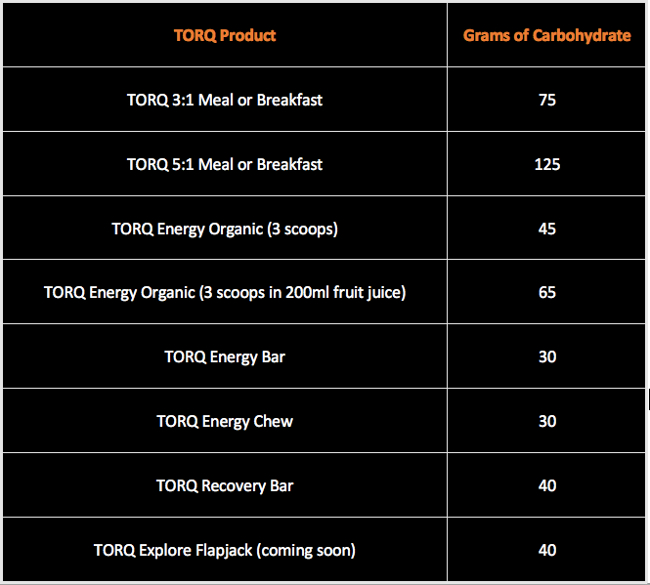The purpose of carbohydrate loading is to super-charge your physiology with glycogen (the form that carbohydrate is stored within the body). Carbohydrate is stored in limited supply (about 500g/2,000kCals) in the muscles and liver and is a key fuel for high intensity endurance performance. When your stores run out during exercise, you will ‘bonk’ or ‘hit the wall’, a phenomenon that see’s any hope of a great performance go to the graveyard! If it’s never happened to you, it’s difficult to describe as an experience other than it will probably make you cry! It really is something you will want to avoid at all costs.
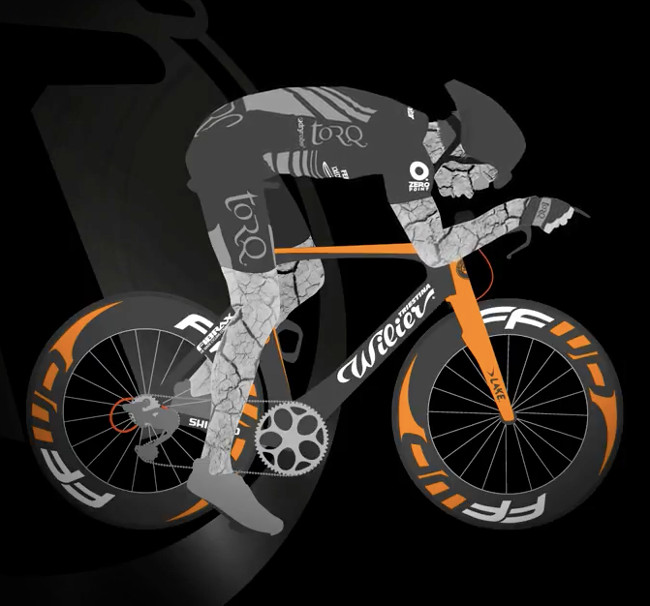
Imagine having a really fast sports car and comparing its performance to a sensible family hatchback – the sports car’s going to go around the race track faster every time isn’t it? Now remove the fuel from the sports car and watch the sensible family hatchback trundle around the track to victory. The human body running out stored carbohydrate is no different. You can put the hard training in and on paper your performance could be significantly better than the person next to you on the start line, but if they’ve got fuel and you haven’t, you’re going to be in trouble. For the avoidance of doubt, from this point onwards, irrespective of how much training you’ve done in preparation for your chosen event, your number 1 priority must be to cram as much glycogen into these stores as possible and then ‘look after them’. A little later we’ll discuss ‘looking after your stores’ but for now we’re going to talk about loading them.
Carbohydrate loading isn’t necessarily the appropriate course of action for 1-day events, unless they are particularly protracted, because it can leave your legs feeling heavy and a bit ‘sparkless’ but multi-day events need to be addressed differently. Putting up with a bit of ‘heavy leg syndrome’ for the first couple of hours of day 1 will be pay off in the long term. Purely and simply, the more carbohydrate you’re carrying going into the race, the easier it will be look after your stores as each day progresses, the better your overall performance will be.
Start to consciously increase your carbohydrate intake 48 hours before the start of your event. Make sure you have a good understanding of what carbohydrate actually is so that you’re consuming the correct foods. We’ve lost count of the number of times someone’s thought they are carb loading on sausages or nuts? Take a look at the foods in the surrounding pictures to get an idea of the kinds of things you should be eating. Your choices need to be high carbohydrate and low fat. Fruit is full of fibre and will keep everything moving through your digestive system, but isn’t very high in carbohydrate calories, so although it should form a part of your carbohydrate loading regime, you will need to hunt for some denser calorie sources too.
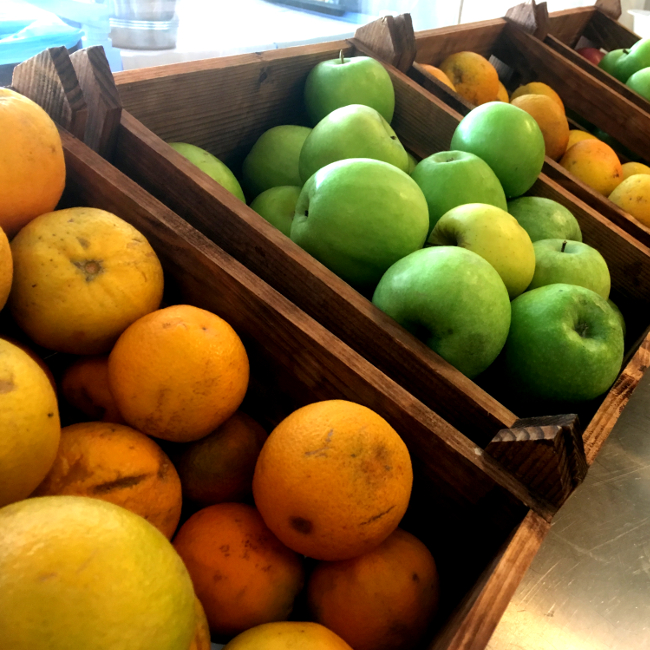
For every gram of carbohydrate you consume, your body stores 3 grams of water, so bear this in mind. Whilst you’re travelling, you should be consuming plenty of water anyway, but continue to drink the day before your event too or you won’t store the carbs.
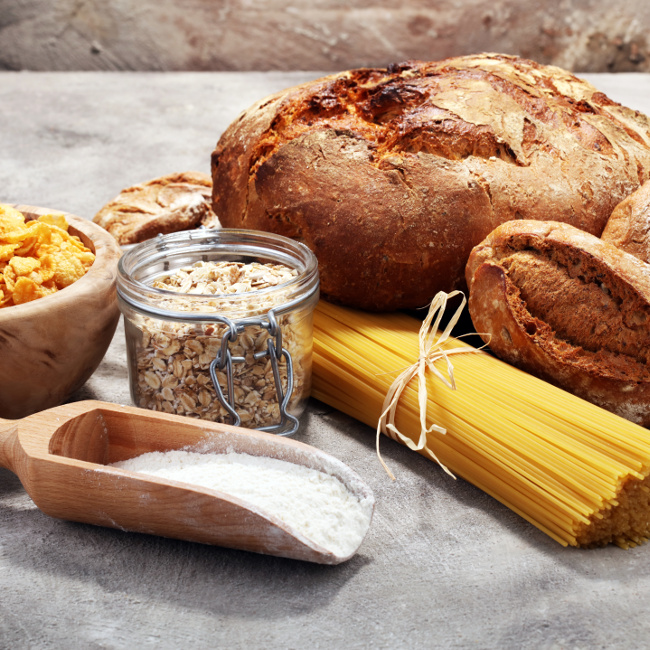
Elevating your carbohydrate intake significantly 24-hours prior to the start of your event is essential and this alone will help to load higher levels of carbohydrate into the muscles than normal. There have been a vast number of carbohydrate loading protocols researched and discussed over the years, going back as far as 1967 (Ahlborg et al) and there’s a summary of the approaches discussed here:
https://www.tandfonline.com/doi/pdf/10.1080/02640414.2011.585473
Some of the early approaches involved quite unsociable and complicated glycogen depletion protocols which have since been proven unnecessary. Taking on board the available research over the years, at TORQ we have put together a carbohydrate loading regimen that has worked really well with our athletes in practice, so we’ll share that with you:
48 hours prior to the start of your event:
Consciously increase the amount of carbohydrate you’re consuming, but don’t stick to any particular protocol, just be aware of the need to consume more.
24 hours prior to the start of your event:
Consume 10-12g of carbohydrate per Kg of bodyweight over the next 24 hours. The majority of this should be before you go to bed the night before the event (see table below to get an idea of the amount you need to consume. The easiest way to figure out how many grams of carbohydrate to eat is to multiply your bodyweight by 10. The diagram below gives an example schedule for a person who weighs around 60Kg. Please note that this is the ‘minimum’ you should be looking to consume. If you weight 70-80Kg and you want to be hitting 12g of carbohydrate per Kg bodyweight, you’ve got some serious eating to do!
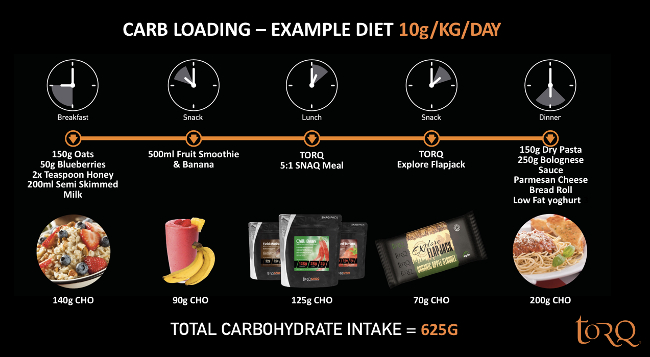
Don’t get too hung up on counting carb grams, just eat ‘a lot’ and if you end up consuming too much, you’ll store a tiny amount of fat as your body looks to store the excess calories, which you’ll burn the next day anyway. Better to have too much than not enough. At the same time, it’s not a bad plan to get an idea of how much carbohydrate there is in various foods so that you make efficient choices during this process. We could insert a table listing whole range of foods here, but it’s much easier to direct you to a resource from Diabetes UK:
Take an interest in the nutrients that are in your foods by looking at the packaging when you purchase ingredients and prepared foods or snacks. You’ll begin to get a feel for the amount you’re taking onboard. This habit becomes second nature for people with diabetes, because it’s essential that they bolus with the correct amount of insulin for the carbohydrate consumed. At TORQ, we are very engaged in the area of diabetes management and prevention, so if you do have any questions at all on the subject, please don’t hesitate in contacting us.
As close as you can to 24 hours prior to the start of the event, you will need to perform a single 3-minute flat-out anaerobic interval. Make sure you warm up well, perform the effort and then spin gently whilst consuming a high quality recovery drink. We’re not going to beat about the bush here, use TORQ Recovery Drink. We explain a little later why this is product is head and shoulders above the competition, but this is not a time to be messing around. Invest in the right product and if your personal research uncovers one with better functionality than ours, we’d love you to let us know.
The reason for performing this 3-minute drill is twofold. Firstly, it opens up your muscular neural pathways. You’ve been travelling and sitting around doing very little, so you need to remind your muscles of the worst case scenario for the following day. A high intensity brief drill like this will not cause fatigue, but it will leave your muscles prepared and primed for tomorrow’s effort. Leaving the neural floodgates open so that the last thing your body remembers is going ‘fast’ is an essential part of your pre-race taper. Secondly, the anaerobic effort stimulates the mobilisation of an enzyme called glycogen synthetase and a number of other intracellular processes which help you to store carbohydrate – the amount of carbohydrate burned in the single 3-minute interval will be insignificant compared to the amount it will help you to store.
After consuming your recovery drink, continue to consume high carbohydrate/low fat food sources and drink plenty of fluid. Of course, it goes without saying that in your quest to binge in carbohydrate, don’t forget also to consume 20-25g protein every 3 to 4 hours.
As well as the high carbohydrate foods listed in the table above, there are a couple of specialist products available from TORQ that can help this process significantly. Firstly, we have developed a range of high carbohydrate, low fat meals and breakfasts that you can conveniently fit into your carbo-loading schedule. The meals and breakfasts suitable for carbo-loading are our 5:1 varieties, available from the following links:
TORQ 5:1 Carbohydrate:Protein Breakfasts
TORQ 5:1 Carbohydrate:Protein Meals
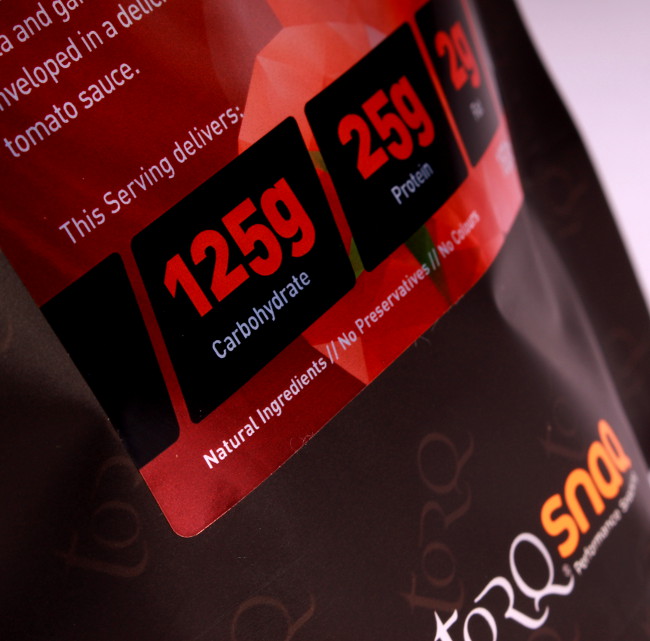
The 5:1 meals and breakfasts have almost identical nutritional profiles, give or take a gram of fat, so it doesn’t matter which one you have, it just comes down to whether you want something sweet or savoury. Where they really excel is that they both contain 25g of high quality protein, so that’s your protein dose dealt with, but also they contain a whopping 125g of carbohydrate per serve. For a 70Kg person, this alone is around 20% of the carbohydrate calories needed for the entire 24-hour period.
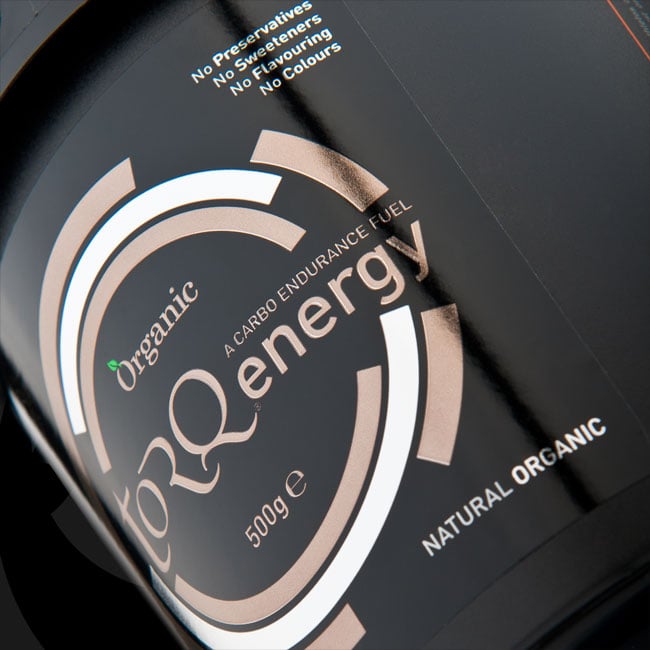
The other product that can be immensely useful during the carbo-loading process is our neutral tasting TORQ Energy Organic Energy. This can be added to any food dish (including savoury meals) or can be made into a neutral tasting drink (or you can add squash if you want flavour). It’s highly versatile and is dubbed ‘the invisible calorie’ due to its flavourless nature by coaches of pro riders whose job it is to prepare their athletes for stage racing. 3 scoops of TORQ Energy Organic popped into a large cup of tea or similar beverage will provide the same carbohydrate calories as a sizable bowl of pasta and you’ll barely be able to taste it. For more information on TORQ Energy Organic, click HERE. Below is a table summarising the carbohydrate content in the TORQ Meals, Breakfasts and Organic Energy powder.
